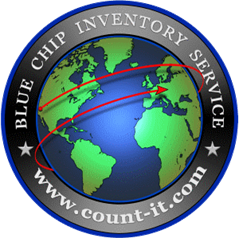
It comes around every year – the inventory audit. It’s a crucial business practice that must be done accurately not only to ensure sales numbers are properly reported on financial statements but to also track product activity to forecast a plan for profitability for the new year.
So are you ready? If not, here are a few suggestions.
Get started early at organizing your storage area, whether it’s a stockroom or warehouse facility. A clean storage area always makes counting inventory, a labor-intensive time-consuming process, run smoothly. For example, you could designate a specific storage area for slow-to-move inventory items and get your inventory management team to pre-count these items. Doing so gives you a head start in the end-of-year process.
Of course it’s hard to count inventory during regular business hours. Sales and fulfillment of orders can skew your inventory count. So, plan to shut your business down for a specific period of time, or conduct the year-end inventory count after business hours. This may be hard to ask of staff, but if your goal is to ensure accurate inventory counts, it makes sense to work this into employee schedules.
You can also look outside for inventory management professionals to help with your inventory audit instead of, or in addition to, a dedicated team of employees.
A good inventory management service has the manpower to get counts done efficiently, and they have expertise in inventory management best practices, including recommendations for inventory tracking and counting.
Whether you need extra staff to count or purge inventory, or help with improving your inventory tracking processes, overall, you want to feel confident that your year-end inventory audit process is accurate. Working with an outside inventory management team is a smart way to tackle that job.


This calculator can help you determine the selling price for your products to achieve a desired profit margin. Try It Free >
Our Audit/Verification Service is available globally - from Thousand Oaks, CA to Timbuktu. Learn More >
Don't just take our word for it. Find out what our clients are saying about our services.
See actual testimonials >
From Retail and Gross Margin Inventory reports, to SKU and Price Verification reports, Blue Chip Inventory provides complete inventory service. See samples >






